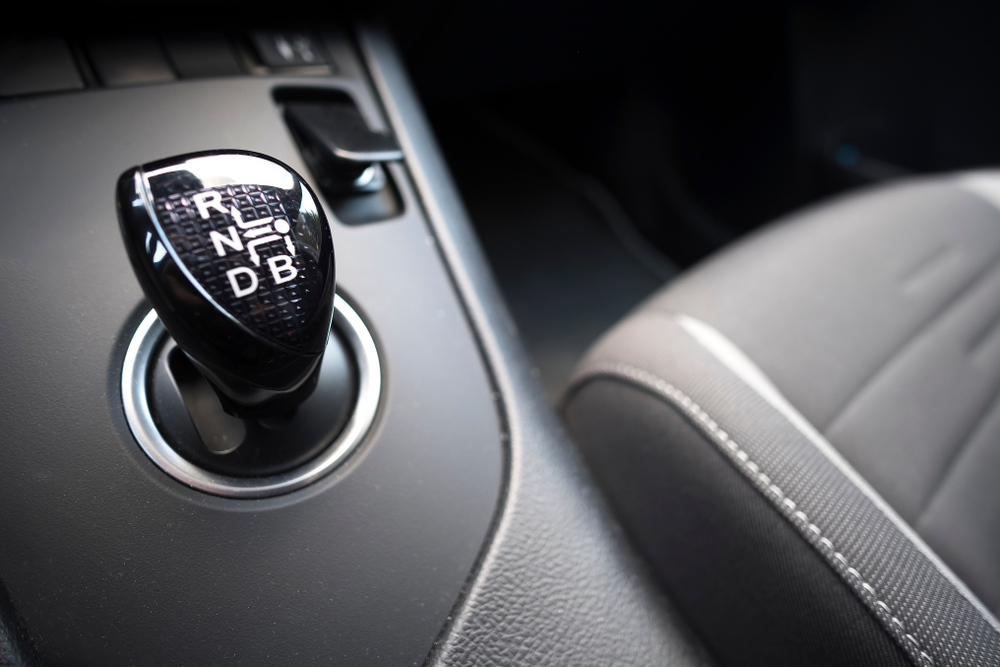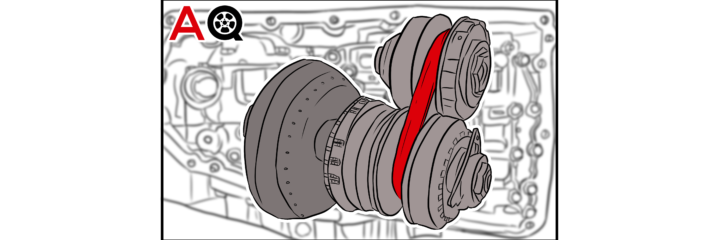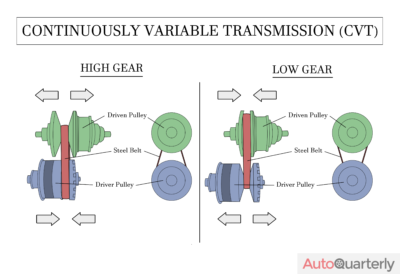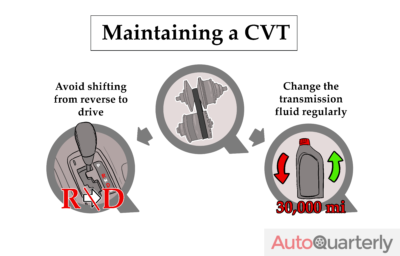A continuous variable transmission (CVT) is an automatic transmission system seen in many modern cars. In this article, we will explain what makes cars with CVT different from regular cars and find out if there really are CVT transmission reliability issues or if it’s a false perception among car buyers.
In most cases, they are as reliable as traditional automatic or manual drive vehicles. All available evidence indicates that vehicles with CVT transmission do not really suffer from poor reliability in line with their reputation. There are some well-known examples of reliability issues especially in earlier generations of CVT-equipped automobiles, but as the technology has improved reliability has followed.
Today CVT based vehicles are widely produced across the global automobile industry, with high standards of reliability and performance. Though they may be slightly more prone to failure than traditional automatic transmissions, but they’re a reasonably reliable affordable and fuel-efficient alternative.
Folks thinking of buying a car equipped with a CVT transmission system should however be aware of the pros and cons of these transmissions. There could be concerns depending on your driving style, vehicle type, and expectations in terms of how long a CVT will last.
How Does a CVT Work?
What does it mean to have a CVT transmission system? In a traditional transmission, both manual and automatic, you get a fixed number of gear ratios you can use – usually five to nine gears in modern cars. Continuously variable transmissions change that by doing away with the concept of gears entirely – instead having a virtually infinite gear range.
Think about a regular transmission system with discrete step gears like a system that transfers power by moving up or down a flight of stairs. A CVT transmission system is by contrast stepless like a ramp, smoothly and continuously transferring power, without the need for up or downshifts to reach peak power transmission efficiency.
With manual gear shift and traditional automatic vehicles, the driver determines what gear they need at any time. But in CVTs, an unendingly variable transmission is like having one fluid gear that’s can keep changing to suit all driving needs. They are also known as stepless transmission systems, because you don’t feel shifts from gear to gear like in traditional step based transmissions.
Continuously variable transmissions operate via a system of pulleys or rollers instead of gears. One pulley connects to the engine, the other to the transmission. Through a clever mechanism, the pulleys are able to adjust as needed to stay in the ideal range needed to distribute power from the engine to the vehicle.
Here is an animated video showing how a CVT transmission works.
CVT Transmission Reliability
These days, CVT transmissions aren’t unreliable. Car manufacturers initially started to use them because they’re light-weight and affordable, but this increased reliability is causing them to include CVTs them more and more. There have been some badly designed CVT transmissions that did fail, leading to the perception that reliability is an issue in these cars. The most famous example being Nissan, which featured serious issues in a number of their lineups made by its subsidiary JATCO.
Nissan was accused of designing an inadequate cooling system for its transmissions in the first few generations of CVT vehicles. Nissan CVT owners with those car models are recommended to change transmission fluid as often as every 30,000 miles. The BMW Mini CVT has also been known to be failure prone and extremely expensive to repair. However most of the problematic CVTs are no longer on the road.
Honda models equipped with the CVT are generally considered the most reliable among all the CVT featuring cars. Nissan certainly believes in their CVT transmission reliability and continues to use them in the vast majority of their smaller passenger cars.
All of the CVTs now being made have excellent longevity, and better design features like a launch gear help to extend the life of a CVT vehicle.
Similar to traditional transmission vehicles, the typical CVT lasts well over 100,000 miles, and many models have been known to easily last twice that long.
Maintaining a CVT
Perhaps another thing that led to the assumption that a CVT is unreliable is that it’s less able to handle neglect. Driving for long periods without proper transmission fluid or not getting the transmission flushed when it’s due is more likely to lead to serious failure, whereas a regular automobile might handle such neglect better.
These are a few things you can do to increase the lifespan of your vehicle’s CVT unit. Avoid shifting from reverse to drive – putting a vehicle into drive straight from reverse while it’s still backing up will be particularly rough on the transmission. If you are driving a clutch CVT it’s a good idea to be careful when inching slowly in traffic.
Change the transmission fluid regularly in a CVT, every 30,000 miles or so (or more frequently in a harsh climate or if recommended by your mechanic). When the CVT heats up it can vibrate excessively, causing loss of power, jerking, slipping, coolant leaks and a CVT failure or CVT error message being displayed.
Should I Buy a Car With a CVT?

Thanks to its ability to continuously change the gear ratio, a CVT is always performing at peak efficiency. You don’t feel any abrupt downshifting when the car needs extra power, nor do you experience the feeling of “gear hunting” for more power that you sometimes get in a traditional automatic.
CVT Transmission Benefits
Not just a cost-cutting measure for manufacturers, there are several reasons why you might want to target a vehicle that has a CVT.
Fuel Efficiency
As a result of being able to instantly deliver the right gear ratio, CVTs tend to be the more fuel-efficient transmissions by a wide margin. A CVT is lighter than a traditional automatic, and the smoother operation puts less demand on the engine, helping to improve the fuel efficiency. An average CVT sedan/hatchback can get about 40 miles per gallon.
Acceleration
Because of the lack of gearing, it’s easier for CVT vehicles to deliver the ideal torque ratio at all times. Therefore, CVTs are better at taking off from a static position and climbing uphill. Variable transmission allows the car to stay in the ideal range for longer in a CVT transmission.
Smoother Ride
The overall drive is significantly smoother than in a vehicle with traditional gear shifts, as there are no pauses or drops in power.
CVT Transmission Disadvantages
If the benefits make CVT sound like the ideal transmission, for many car owners it might well be the case. But there are some downsides of CVTs to be aware of as well.
High Repair and Maintenance Costs
Most CVTs depend on steel belts to drive the power transmission – when subjected to excessive wear and tear, the transmission can completely fail. CVTs can be expensive to repair or replace when compared to a conventional automatic transmission and you will need a trained mechanic to rebuild the transmission.
Lack of Power
CVTs can suffer from a lack of power offered in off-road conditions where quick gear changes are needed. CVTs tend to be designed for less powerful four-cylinder engines and there are limits on the engines that can work with a CVT in terms of power and size. But this is also changing with improving technology.
Overheating
Overheating related issues reported by CVT vehicle owners include slipping, shuddering, and sudden loss of acceleration.
Droning Sound
Many drivers tend to have an issue with the peculiar and loud droning sound that occurs during acceleration. This happens because the CVT forces the engine to continuously run at a constantly high rpm as it accelerates.
They Don’t Feel the Same
While the lack of upshifting and downshifting is considered an advantage, a lot of drivers miss the sensation of moving through the gears. Even in a regular AT vehicle, you can feel the jolt from the car shifting into the next gear. This smoother stepless drive is so different from what motorists have become used to that they feel disconnected from the engine acceleration.
For those who prefer a sporty driving experience, the lack of gears can make the ride feel less engaging, so CVTs can be perceived as unpleasant to drive by the purists who love the feeling of changing gears.
Not All CVTs Are Created Equal
A large number of CVTs are produced in Japan and equipped on nearly 90% of Japanese models, as per this report by automotive industry portal MARKLINES. Since the U.S. has a higher number of large vehicles, step-type ATs are for now still more widely used than CVTs. So that people can enjoy the experience of driving a CVT at least as much as a traditional automatic, auto manufacturers have started equipping their CVT vehicles with performance-oriented features like a launch gear and paddle shifters.
The common CVT types manufactured in the market are:
- Friction stepless type transmissions using a belt or chain to transfer power.
- Electric CVT (eCVT) or hybrid transmission: these are systems that use a motor or generator for power transmission.
- Hydrostatic CVT uses pumps to control fluid flow, which then produces a rotational motion.
Is a CVT Right for Me?
The transmission is a core component of any vehicle, and often a differentiator between car brands, greatly affecting the driving capability, fuel economy, and ride feeling. Apart from being more reliable than is generally thought, CVTs are really quite good at efficiently transferring power while smoothly and efficiently using the engine’s torque.
If you’re interested in a fuel-efficient commuter vehicle or drive a lot in stop-start city traffic, a CVT is likely to be the perfect transmission for your car.
But if you’re looking for a top of the line performance engine, then a CVT is unlikely to be the right choice for you. CVTs are therefore generally not used in very powerful sports cars or premium luxury models but are especially suited for smaller fuel efficient cars.




